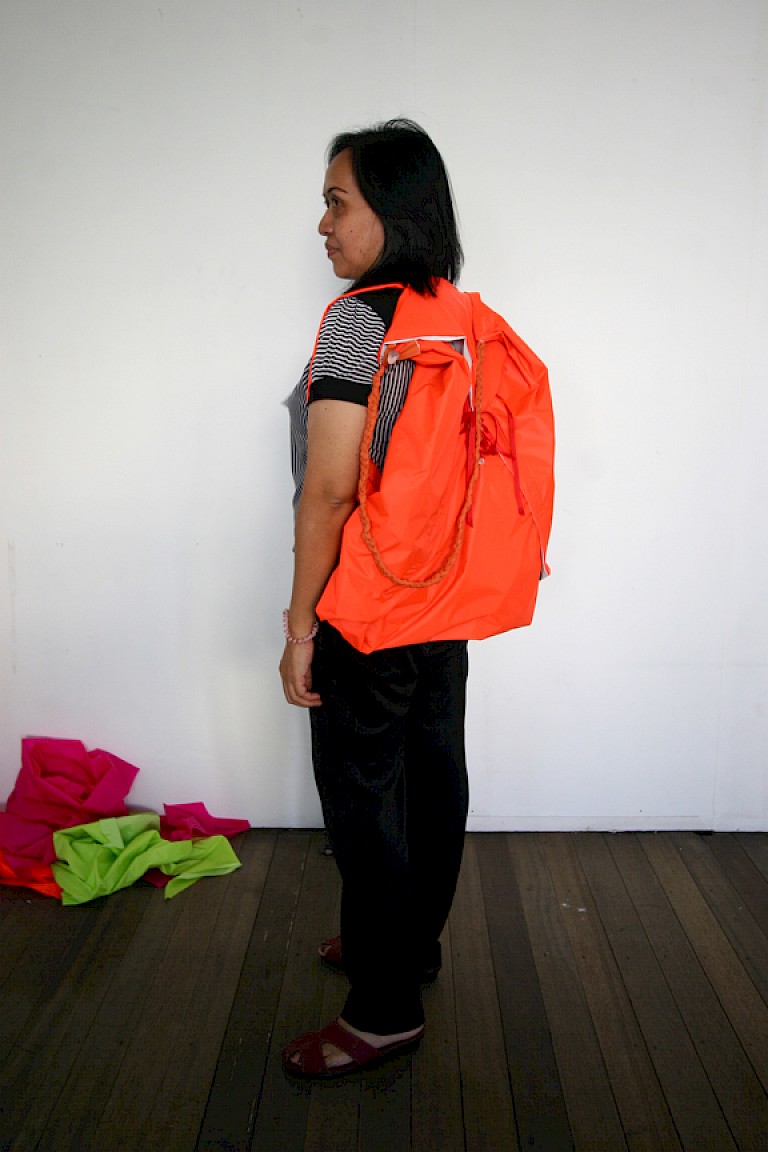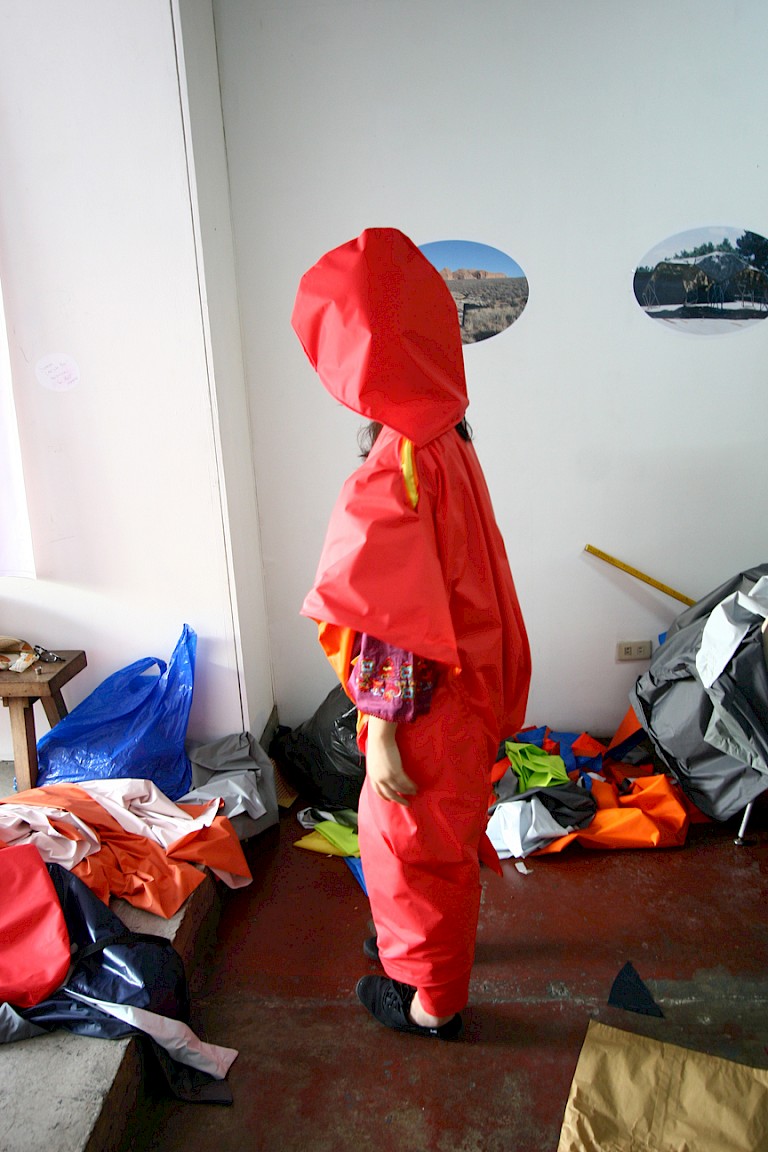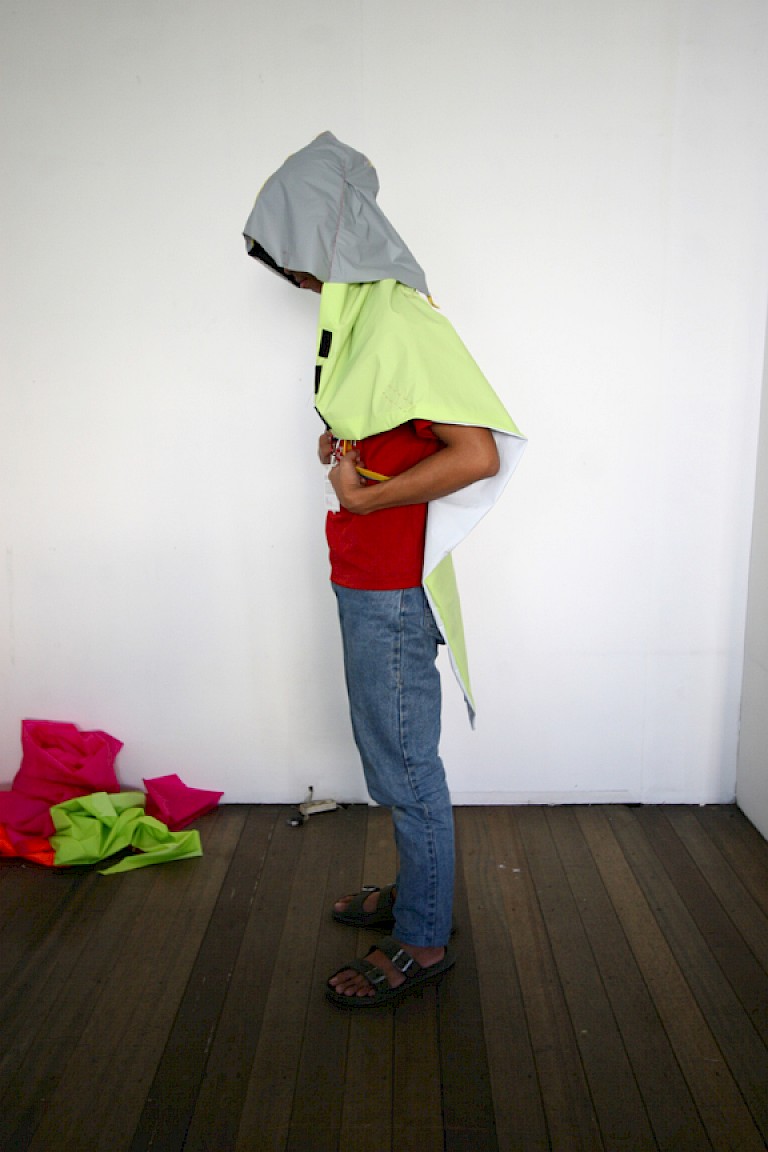



Through the fellowship, Mary attempt to create a water-shaped habitat structures for the community that yearly affected by flood. The structure was deliberately designed in response to the climate conditions which convey the idea of portability and the ability of assemble and dissembled. Green Papaya Art Project was selected to assist Mary’s fellowship in the Philippines, an organisation that supports creative and practical collaboration in contemporary art practise. The project preparation itself has been conducted through one year of conversation between Mary and Green Papaya Art Project to discuss and plan the programme scheme that needs to be achieved. Upon her arrival in Manila she conducted a site research of the climates, resident living condition among the urban poor and available resources in Manila. In order to have an interdisciplinary design approach, the participant were then selected through a call for participation announcement and direct interview by Mary Mattingly.
She had also given a lecture to introduce her practice along with her project frame as an open source collaboration and to proceed with further workshop at Green Papaya Art Project. The workshop involved 20 participants, with interdisciplinary background from contemporary art community, local community, Manila’s architecture demographic, university and high school students, and from local non-government and government units. At the beginning of the workshop, key experts were invited present educational talks within three separate topics; which are climate change by non-government, portable architecture by professional architect and disaster risk management by government. Following the talks, participants were started to collaborate in designing and creating the mobile public habitat for predictable weather emergencies. As the lead artist Mary brought an informed artistic approach of the problems, which complement by students improvisational approach and completed by architects with knowledge in real material capabilities and limitations. Later, each of the functional participants design has to be assembled into one sphere that are able to provide solutions upon the shelter, food, energy and water concerns. They had also done a street intervention by carrying the sphere to travel from gallery to local High School within the same location, and was left there to be further engaged with the students. The next day Mary and all participants hold a discussion and public presentation for the students. By the end of the project, they held an exhibition event to show all the process and each participant’s creation together with the film of projects’ documentation. The sphere was also placed inside the gallery, where children and adults can also engage during the exhibition time.
In order to succeding the project, it required to have an interdisciplinary approach from different element background of the society. Through a carefully planned programming scheme, they were able to select 20 participants from contemporary art community, local community, Manila’s architecture demographic, university and high school students, local non-government and government units. Together they collaborate to bring out their creativity and strength in creating various form of wearable and portable structures for this project. With the government element took part of the project, the discussion were led to understandings of how helpless the government also can be in facing the environmental issue. This project was then becoming the merge of every element from the society to collaborate in providing solution for their environmental issue through a space that can be easily assemble and dissemble.
To be specific, they were adressing the timely issue of flooding and mobility with a portable architecture structure that they expect to be function as protection, water collection, food storer as well as to produce power.
This project also hold a concept of utopia and dystopia, and how through this collaboration they can create utopia within the space that they made and how the urban and rural surroundings would appear if the built environment is portable. It can been as a modern approach of “bayanihan” concept, which is an existing traditional Filipino’s method of having their house built from simplest material and to carry the whole house together in order to move from one place to another.
After the workshop ends, people were feel empowered and having better understanding and motivated to bring the environmental issue up for discussion with the government. In 2014, there was an individual follow up initiate by Green Papaya which they received funding from Japan Foundation to associates with Design for Villages (D4V) in order to bring the wearable, portable architecture into the actual sites.
smART power is a cultural diplomacy program that was initiated by U.S. Department of State’s Bureau of Educational and Cultural Affairs and administered by the Bronx Museum of Arts, New York. Mary Mattingly was one of the 15 American artists (selected from 900 applicants) that were sent abroad to work with local artists or art organisation around the world in creating community-based art project. Her practice addresses nomadic themes based on the future environmental and political situations. Within this project scope, Green Papaya Art Project was appointed as the cooperation partner in the Philippines. For the past 10 years their programmes were presenting the link of the mainstream art practice and independent experimental art practice.
smART Power: Wearable Portable Architecture Manila project was incubated through a one year conversation process between Mary Mattingly and Green Papaya Art Project prior to the project started in Manila.
The project began on September 15 to October 31 2012, with series of process that includes research phase, community education and engagement, artist talks, workshops, street intervention, cumulative exhibition, and site specific intervention/projects to conclude the project. The whole smART power project were funded by SmArtpower’s 1 million annual allotment from the United States State Department with additional support from the Robert Sterling Clark Foundation, Lori Schiff Chemla, and ALTOUR.
All copyright belongs to Shanghai Academy of Fine Arts, Shanghai University.



